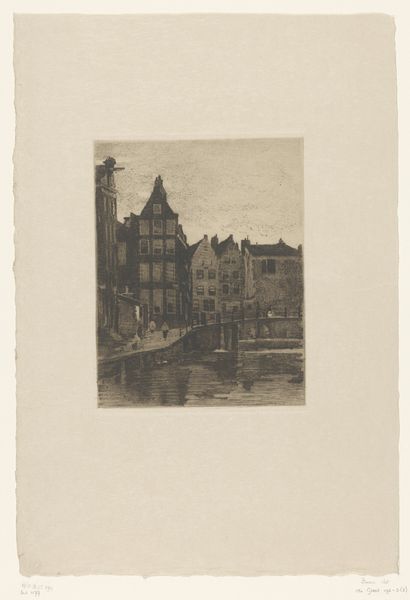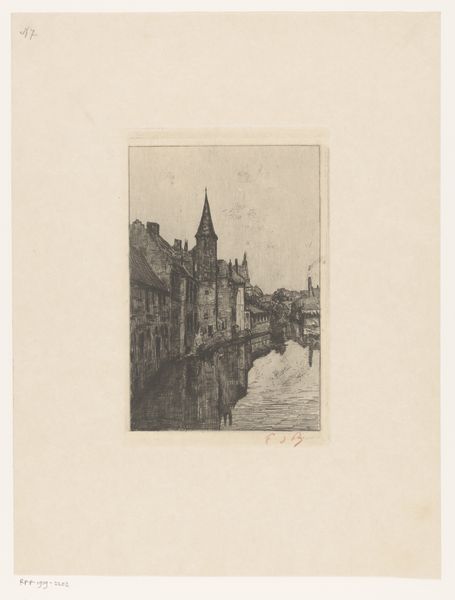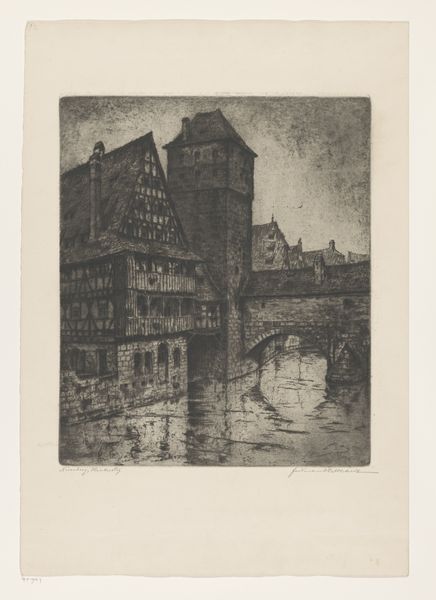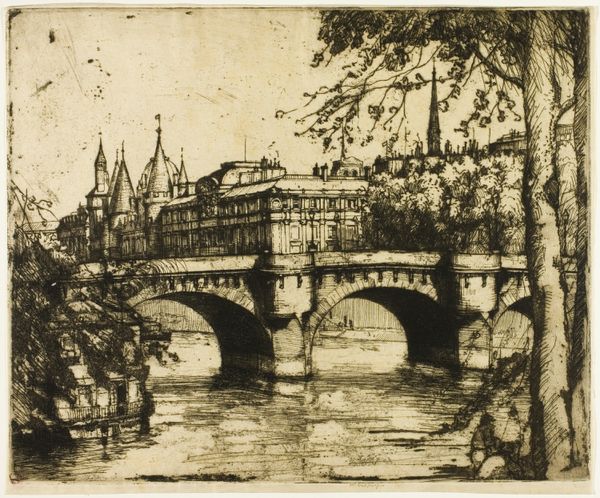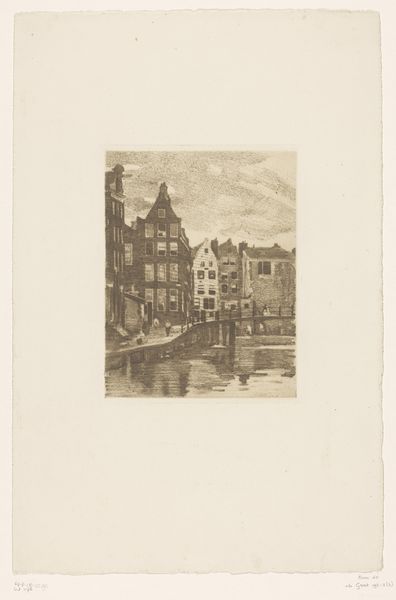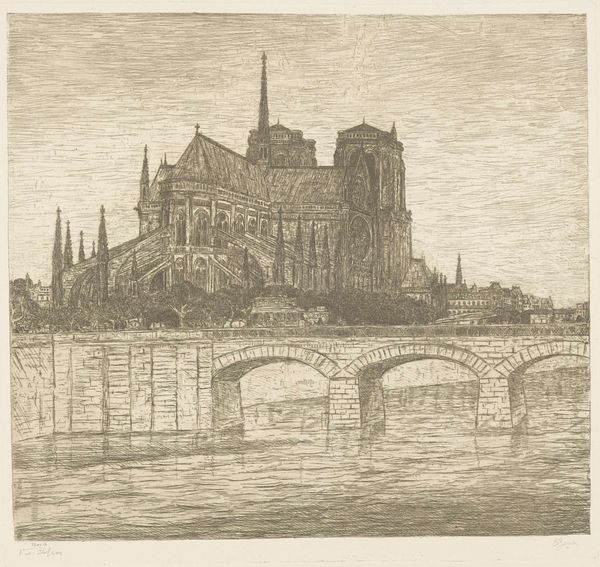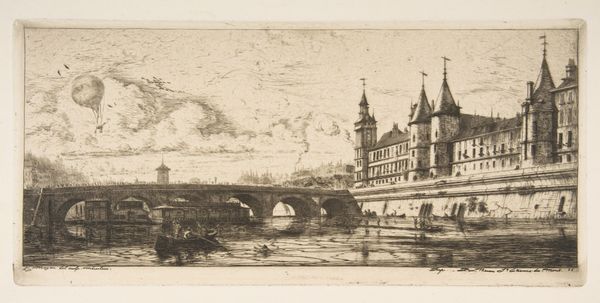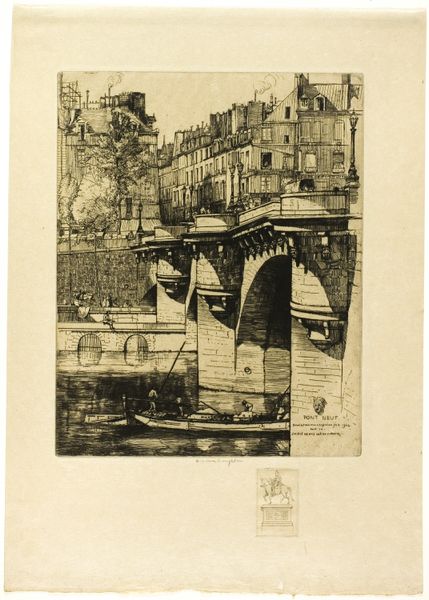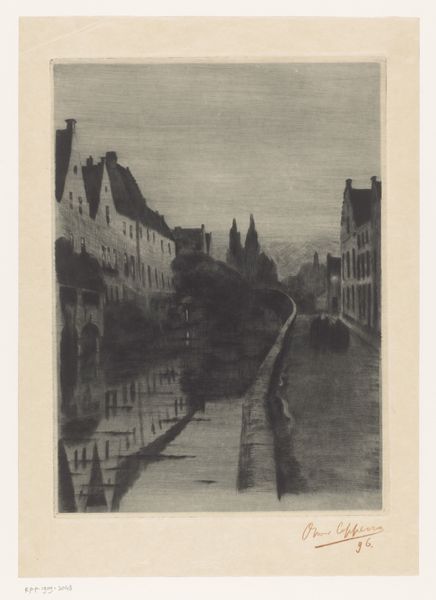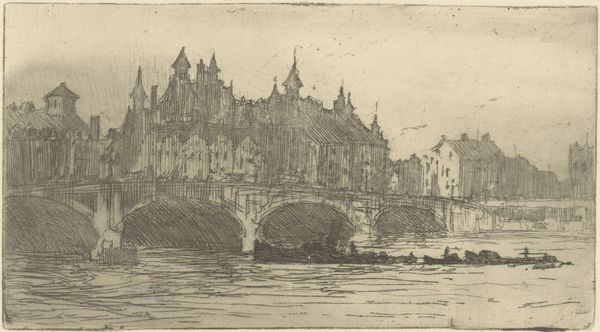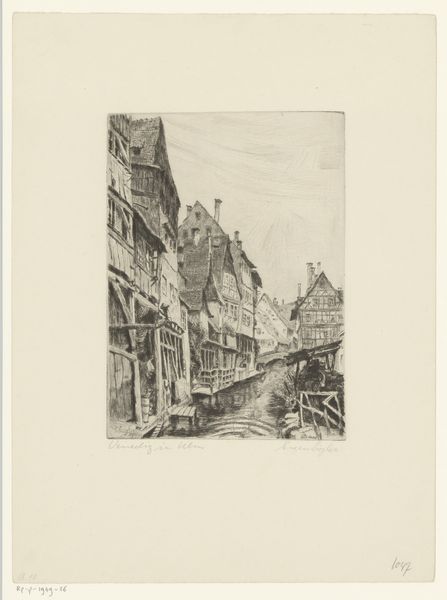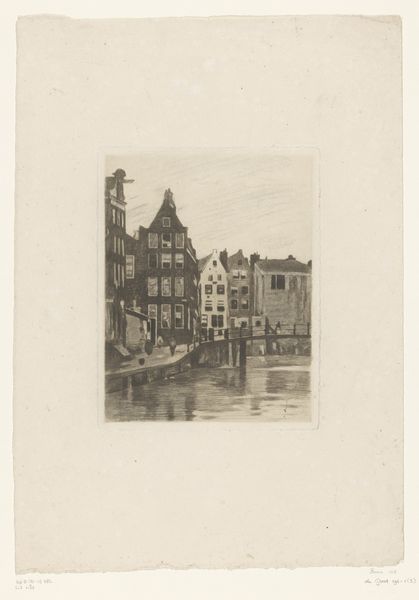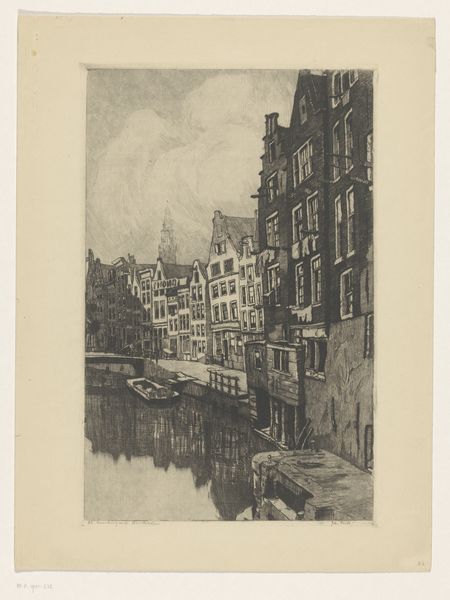
print, etching
# print
#
etching
#
landscape
#
etching
#
cityscape
Dimensions: height 255 mm, width 220 mm
Copyright: Rijks Museum: Open Domain
Editor: Here we have Martin Monnickendam's "Gezicht op de Saint-Gervais in Parijs," an etching created sometime between 1884 and 1931. I'm struck by the almost ghostly quality of the buildings and the Seine. It feels very dreamlike, almost melancholic. What catches your eye when you look at it? Curator: The enduring power of architecture, particularly that of religious institutions like Saint-Gervais, speaks volumes, doesn’t it? Even as the city transforms around it – evident in the variety of architectural styles depicted – the church maintains its symbolic presence. Notice how the artist positions it, dominating the skyline yet integrated within the daily life along the river. What emotions does that juxtaposition evoke? Editor: It's like the everyday and the eternal existing side-by-side. I guess that feeling of melancholy I mentioned comes from a sense of fleeting time against this backdrop of permanence. Curator: Precisely. And consider the river. Water is a potent symbol of change, of the relentless flow of time. By placing figures in the water, and depicting boats, Monnickendam subtly introduces a narrative about human activity existing in concert with, and being shaped by, historical and spiritual forces. The bridge becomes more than just a structure. Editor: It's a connector, a pathway between those different worlds... the sacred and the secular. Curator: It reminds us how symbols resonate through time, their meanings shifting and layering with each era, yet retaining a core connection to the past. Monnickendam's cityscape, therefore, functions as a cultural record but also an enduring meditation on change, continuity, and faith. Does understanding that layering change how you see the initial feeling of melancholy? Editor: Yes, it does. It becomes a more complex feeling... a recognition of the beauty and sadness of time passing, and how symbols can both anchor us and remind us of how much has changed. Curator: Indeed. It has been insightful to revisit these intersections of symbolic meaning with you today. Editor: Thanks! I'll certainly be looking at etchings, and cityscapes, differently from now on!
Comments
No comments
Be the first to comment and join the conversation on the ultimate creative platform.

